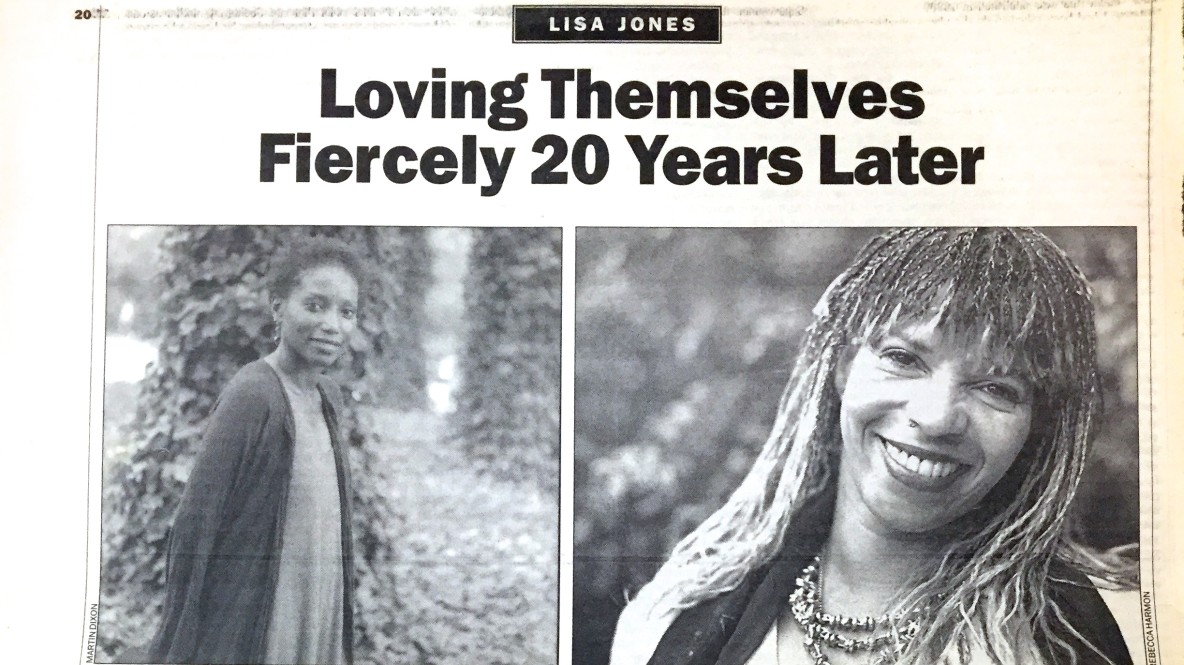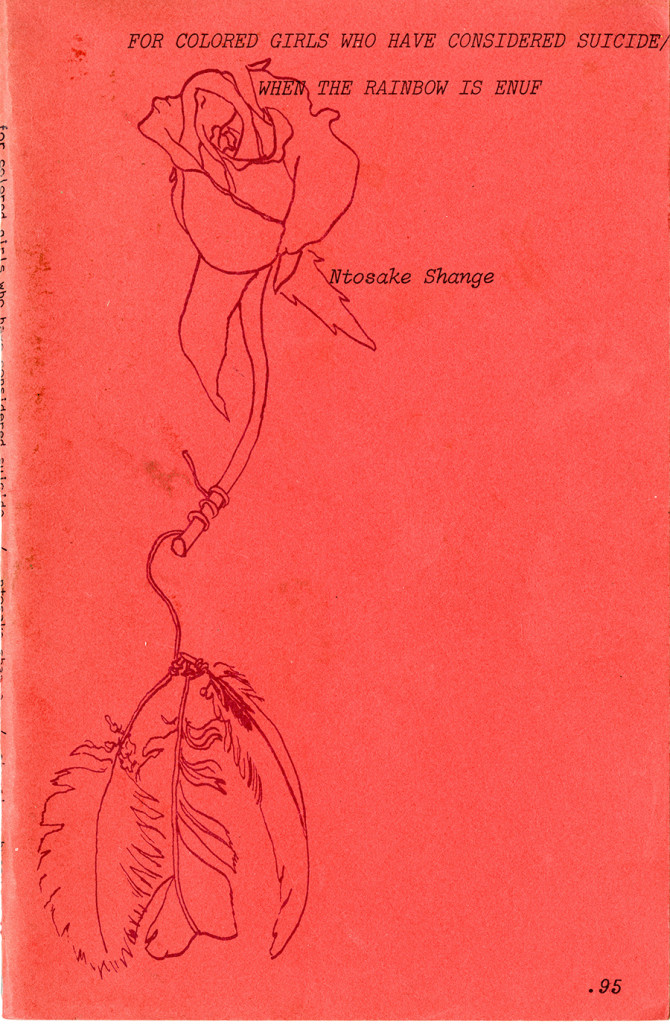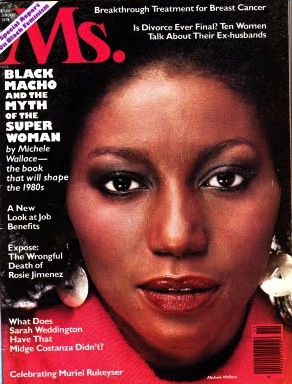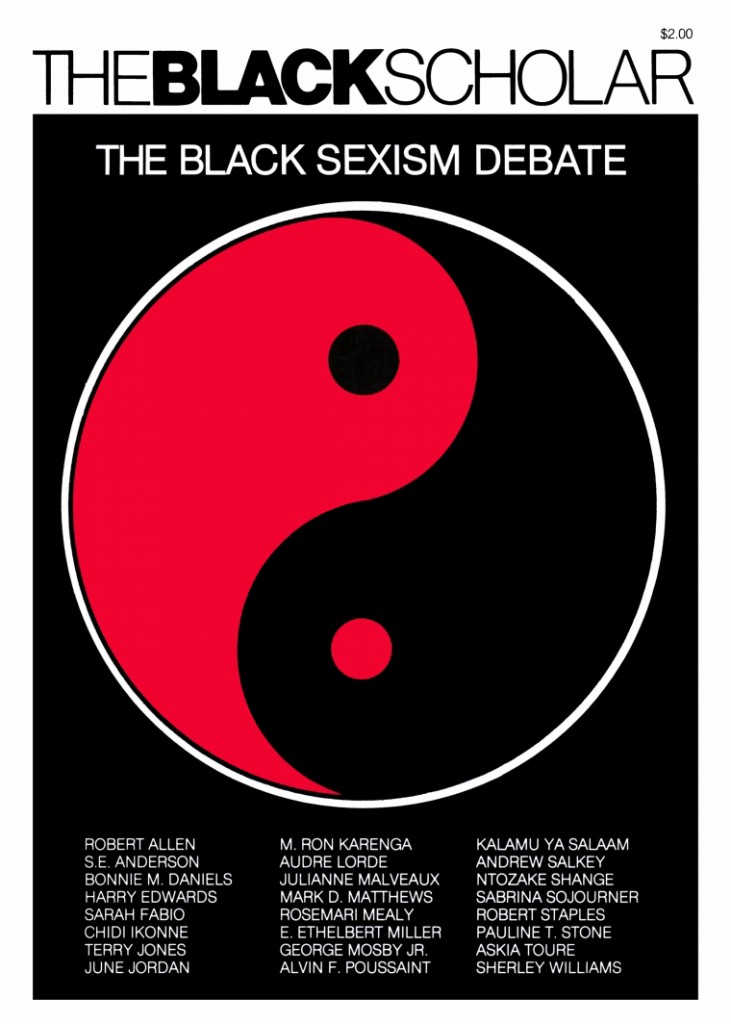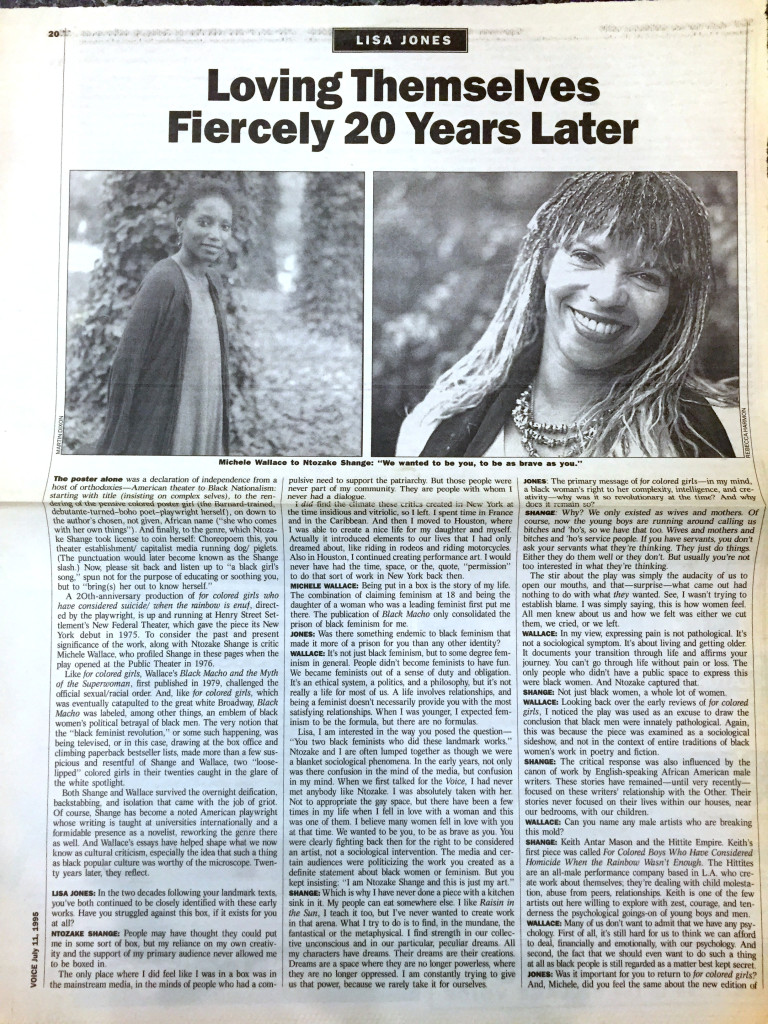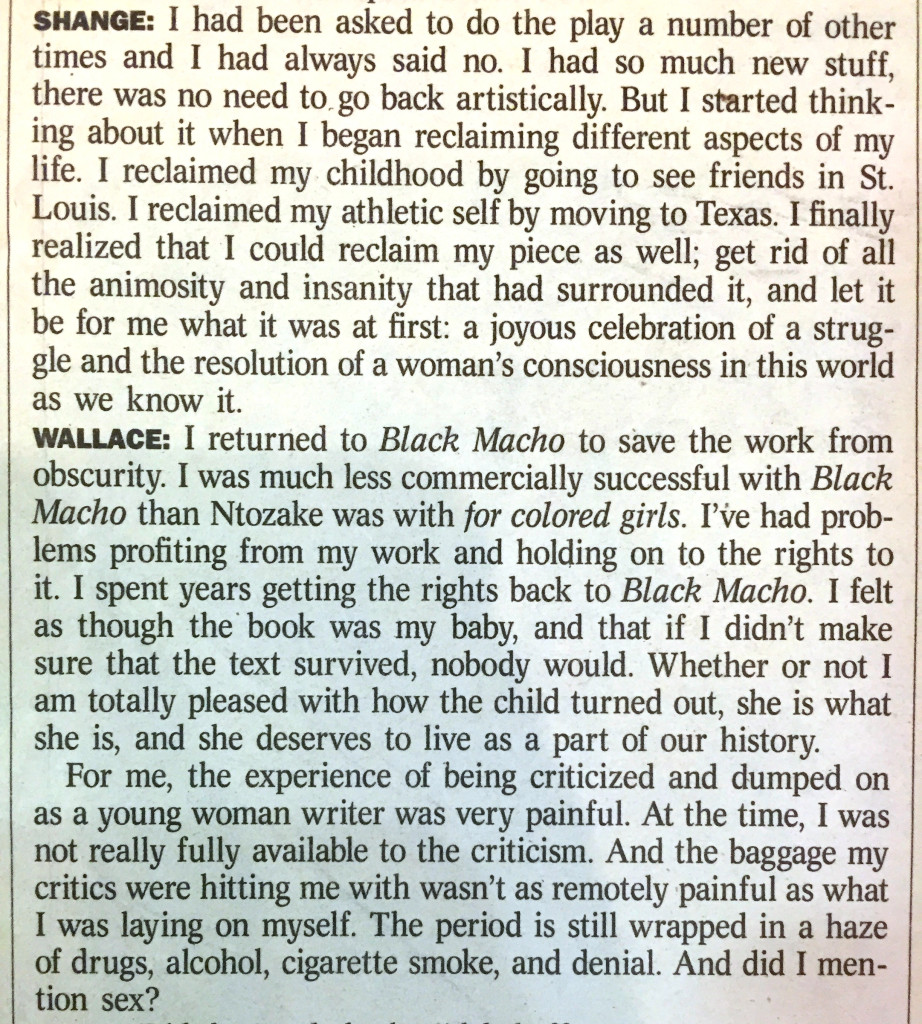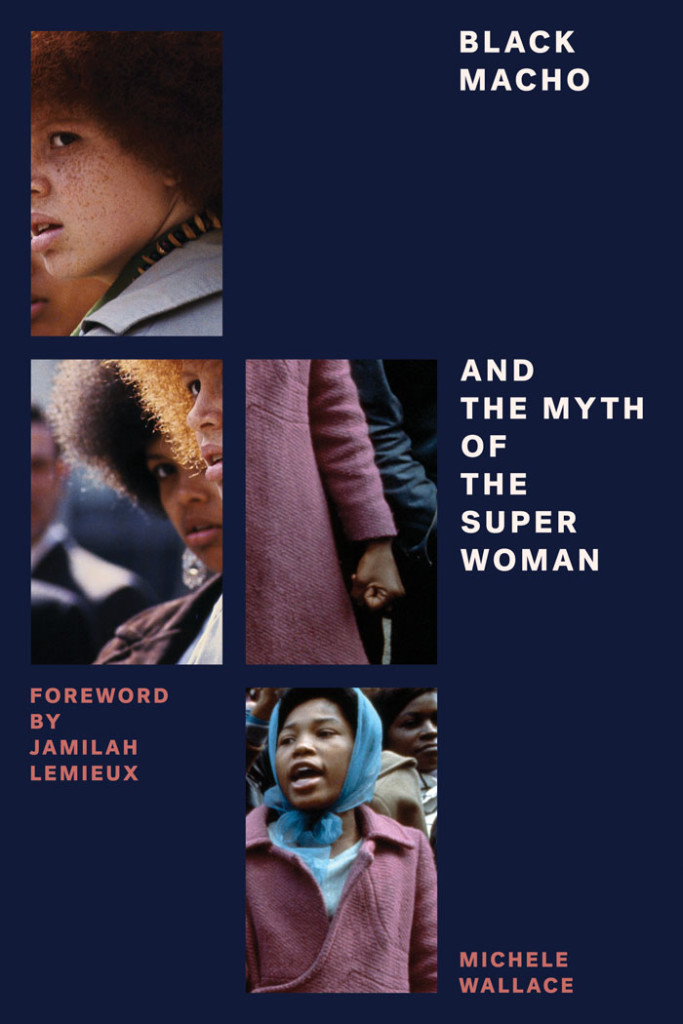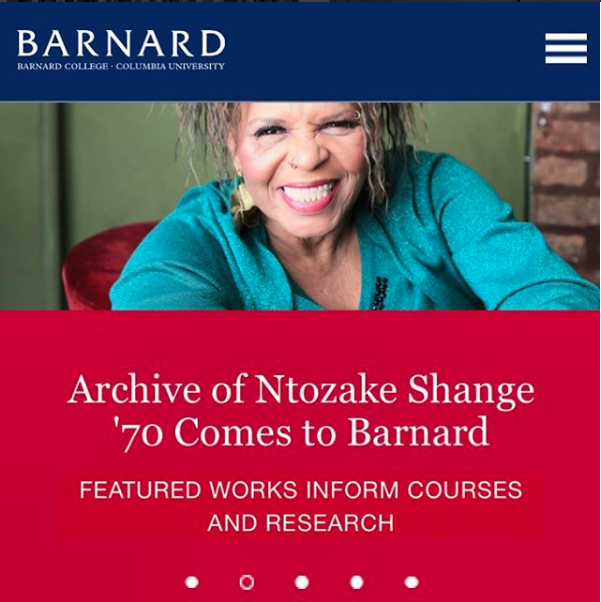CLARKE WHEELER
I understand the possibility “to start a phrase with a word and end with a gesture” (“Why I had to Dance” in Lost in Language and Sound, p. 58) as not only a celebration of movement, but also a celebration of development. “A word,” idea, belief, or practice is not static, and can result in some kind of gesture of change and growth. While exploring the archives of Ntozake Shange and Michele Wallace, I observed some of the ways their “words” end in “gestures” as well as the importance of celebrating our individual and collective growth and development processes.
It is possible to start a phrase with a word and end with a gesture/ that’s how i’ve lived my life/ that’s how i continue to study/ produce black art/
why i had to dance//
Lost in Language and Sound
exploring the archive //
“This Would Change Over Time,” celebrates the unique role of the archive within the celebration and historicization of black arts and feminisms. While the archive is often understood as a stagnant or sterile space, the Shange Papers can help us dismantle these notions of archiving. The Shange Papers allow visitors to see Shange’s work in process — including edits, revisions, scratches, and notes. Some documents are labelled, “not proofread,” and hasty notes reveal a constant and integral self-revision process. Acknowledging this process as it manifests within the archive can help us understand this process within black liberation movements. By acknowledging the ways critique, revision, and conversation contribute to changes in these movements, this project is concerned with the ways we can understand Shange’s growth as an artist, as well as the growth of the Black Arts Movement and/or black feminisms over time.
The following represents just a small sample of archival materials in the Shange Papers that include her edits, revisions, scratches, and notes:
critiques/revisions/conversations //
In addition to the Shange Papers, I explored the Michele Wallace Papers at the Schomburg Center. I chose to juxtapose Ntozake Shange and Michele Wallace because both women’s work is central to an understanding of Black Arts and black feminisms, and the evolution(s) of these movements over the past several decades. Their works in the archive both exhibit signs of self-revision, edits, scratches, and notes, and they are still in the process of developing and growing as creators. Their growth processes are not done in isolation; they are in conversation with broader black liberation discourses at various times. Importantly, Ntozake Shange and Michele Wallace are specifically in conversation with each other a number of times throughout their careers.
Following the publication of For Colored Girls Who Have Considererd Suicide / When the Rainbow Is Enuf (1976) and Black Macho and the Myth of the Superwoman (1979), both Shange and Wallace were at the center of the “black sexism debate.” Due to their centering of black women and girls’ experiences, they received harsh criticism from those who considered calling out sexism in the black community a divisive tool. For its May/June 1979 edition, The Black Scholar Volume 10 No. 8/9 was titled “The Black Sexism Debate.” The issue discussed the ways Shange and Wallace’s work fit within the broader Black Arts Movement and black feminisms discourse of the time. This was a key moment during which Shange and Wallace revised, edited, and developed within the “black sexism debate.” Since then, both Shange and Wallace have made revisions to their famous works, and their audiences have contributed their own revisions, through reinterpreted performances of For Colored Girls, a Foreward in the 2015 edition of Black Macho that evokes Black Lives Matter, and, of course, the Worlds of Shange and Digital Storytelling course at Barnard College.
The following booklet includes images representative of Ntozake Shange and Michele Wallace’s development processes over the years:
archival implications //
The archive allows us to have access to Shange’s work even in its “not proofread” format. It not only reveals the often overlooked work of artists, but also the journey that artists like Shange experience, both in the process of publishing a singular piece and over the course of their artistic career/livelihood. Shange’s archive exemplifies starting a phrase with a word and ending with a gesture, and creates space for both Shange and her community to “change over time.”
